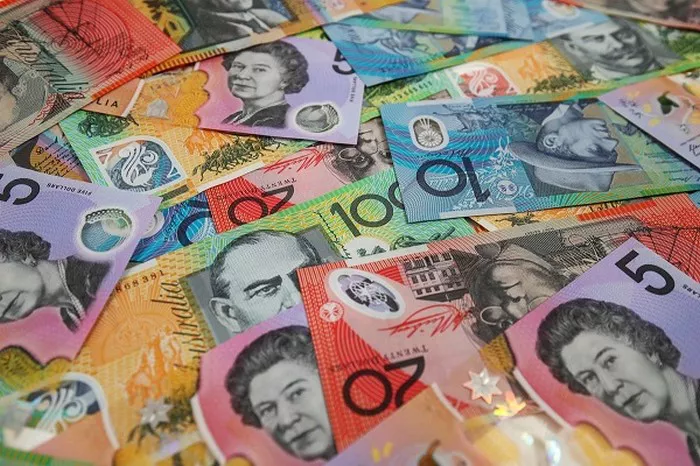Currency plays a pivotal role in the global economic landscape, and the Australian dollar (AUD) is no exception. For investors, travelers, and businesses alike, understanding the value of the Australian dollar is crucial. In this article, we will delve into the factors that influence the worth of the Australian dollar, its historical trends, and its significance in the global financial markets.
The Basics of the Australian Dollar
The Australian dollar, denoted by its symbol “$” and currency code “AUD,” is the official currency of the Commonwealth of Australia, as well as several of its territories, including Christmas Island, Cocos Islands, and Norfolk Island. The Reserve Bank of Australia (RBA) is responsible for the issuance and regulation of the currency. Since its introduction, the Australian dollar has become one of the world’s most traded currencies, and its value is subject to various economic factors.
Factors Influencing the Value of the Australian Dollar
Interest Rates: One of the most significant determinants of the Australian dollar’s value is interest rates set by the Reserve Bank of Australia (RBA). When the RBA raises interest rates, it attracts foreign capital, which increases the demand for the AUD and subsequently raises its value. Conversely, lower interest rates can lead to a decrease in the AUD’s value as it becomes less attractive for foreign investors.
Economic Data: Economic indicators such as GDP growth, inflation rates, employment figures, and trade balance have a profound impact on the currency’s value. Positive economic data can boost the Australian dollar as it reflects a strong economy, while negative data can lead to a depreciation of the currency.
Commodity Prices: Australia is known for being a significant exporter of commodities, especially minerals and agricultural products. The value of the AUD is closely tied to the prices of these commodities in the global market. When commodity prices rise, the Australian dollar typically appreciates, and when they fall, the currency tends to depreciate.
Political Stability: Political stability is another crucial factor. A stable government and sound political policies can attract foreign investment, thus strengthening the Australian dollar. On the other hand, political uncertainty can weaken the currency.
Global Economic Conditions: The state of the global economy also plays a pivotal role in determining the value of the Australian dollar. Economic events and trends in major economies, such as the United States, China, and Europe, can have a significant impact on the AUD. For example, a global economic downturn may lead to a stronger US dollar, which, in turn, can lead to a weaker Australian dollar.
Historical Trends
Understanding the historical trends of the Australian dollar can provide valuable insights into its value. Over the years, the AUD has experienced significant fluctuations, influenced by both domestic and international factors.
The Float of the Australian Dollar (1983): Before 1983, the Australian dollar was pegged to a specific exchange rate with the British pound. In 1983, the Australian government decided to float the currency, allowing its value to be determined by the foreign exchange market. This move brought increased flexibility to the AUD and allowed it to respond to market forces.
Periods of Strength: The Australian dollar has gone through periods of strength, driven primarily by high-interest rates, booming commodity prices, and robust economic growth. In 2011, the AUD reached parity with the US dollar for the first time, demonstrating its resilience and strength.
Periods of Weakness: On the flip side, the AUD has also experienced periods of weakness. Factors such as falling commodity prices and global economic downturns, like the 2008 financial crisis, have contributed to declines in the currency’s value.
Recent Trends: In recent years, the Australian dollar has remained relatively stable, hovering around 0.70 to 0.80 US dollars. The COVID-19 pandemic had a significant impact on global currencies, and the AUD was no exception. In response to the economic uncertainty brought about by the pandemic, the RBA cut interest rates to historic lows, which impacted the currency’s value.
The Significance of the Australian Dollar in Global Financial Markets
The Australian dollar holds a unique position in the global financial markets, and its value extends beyond Australia’s borders. Here are some ways in which the AUD is significant internationally:
Global Trade: The Australian dollar is widely accepted in international trade, making it a preferred currency for cross-border transactions. As Australia is a major exporter of commodities, the AUD is often used in trading commodities on the global stage.
Carry Trade: The AUD is frequently used in carry trade strategies, where investors borrow funds in a currency with low-interest rates and invest them in a currency with higher interest rates. This practice has made the AUD a popular choice for traders seeking to benefit from interest rate differentials.
Investment: International investors often consider the Australian dollar as part of their diversified investment portfolios. The currency’s stability and potential for yield make it an attractive option for foreign investment.
Forex Trading: The AUD is one of the most traded currencies in the foreign exchange (forex) market. Trillions of dollars are exchanged daily in the AUD/USD currency pair, making it a significant part of the global forex market.
Conclusion
The value of the Australian dollar is a complex interplay of domestic and international factors, including interest rates, economic data, commodity prices, political stability, and global economic conditions. Understanding these factors and their historical impact on the currency can provide valuable insights for investors, businesses, and travelers dealing with the Australian dollar. As one of the world’s most traded currencies, the AUD holds a prominent place in the global financial markets, and its value remains a subject of interest and discussion among economists, traders, and policymakers worldwide.


